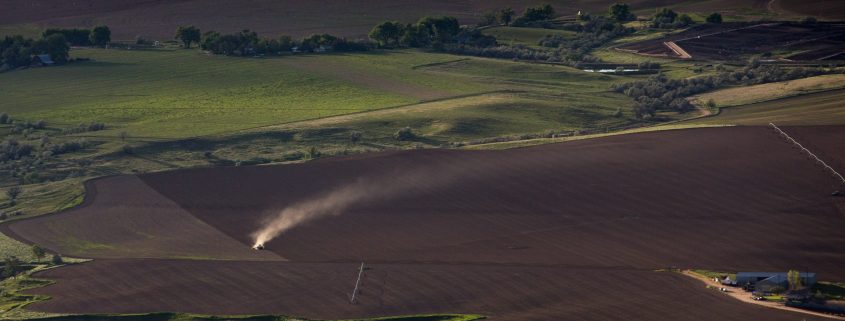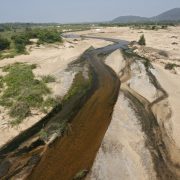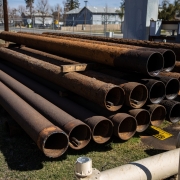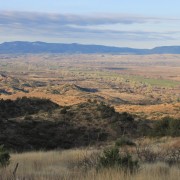2017 Preview: Window of Opportunity for U.S. Department of Agriculture
Can the USDA make inroads for water quality and water infrastructure where the EPA has struggled?
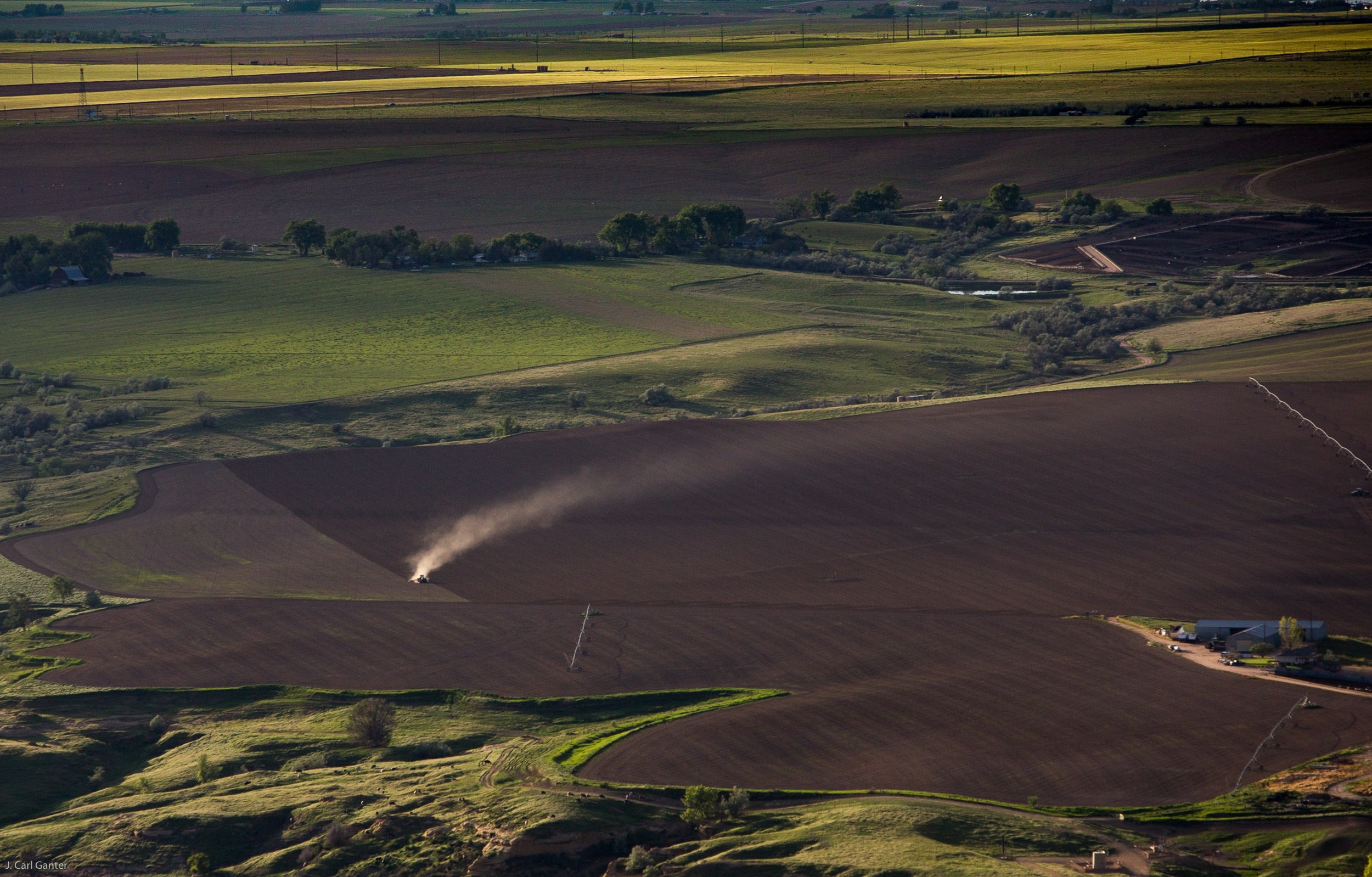
Evening settles over farmland in Weld County, Colorado. Photo © J. Carl Ganter / Circle of Blue
By Brett Walton, Circle of Blue
Her appointment as the nation’s top air and water regulator nearing its end, Gina McCarthy is on a confessional tour. The U.S. Environmental Protection Agency administrator spoke candidly in recent months about the agency’s failure to build trust with rural America, particularly with farmers.
“EPA does not have the strong relationships with rural communities that it has with urban communities,” McCarthy told the Washington Post on December 21. “We work in a lot of communities, we work on a lot of urban-related issues. We have great relationships with mayors. But we have tended to not be able to have a very compelling rural agenda and to build constituencies there. That’s been challenging for us.”
Two months earlier, during a speech at the James Beard Foundation Food Conference in New York City, McCarthy floated the same argument. “There has got to be some wake up calls, some aha moments, where agriculture demands [environmental change] of themselves, because I don’t think we are in a position to demand it of them,” she said.
Budget cuts, changes to its oversight programs, and regulatory battles over Clean Water Act jurisdiction over wetlands and streams consumed much of the EPA’s attention in recent years. In court, losses in two U.S. Supreme Court cases over landowner authority to challenge the agency’s decisions stymied the agency and contributed to conflict and confrontation in its dealings with rural communities. Trust is hard to come by, McCarthy concluded in her Beard Foundation remarks: “We are just too suspect.”
That admission dismays many hardline green groups, which clamor for a tougher environmental cop. But the facts on the ground suggest, at minimum, enough dissatisfaction that there is room to experiment. Might there be a twinned path, one that uses a complementary set of tools and incentives to achieve clean streams and durable small-town water systems? McCarthy herself suggested an agency that is more trusted than the EPA among farmers and has a deep but underappreciated role in U.S. water policy: the U.S. Department of Agriculture.
Observers familiar with both agencies say the idea has merit and could build off of existing USDA conservation and water infrastructure programs. The timing is right, too. With the farm bill, the federal government’s primary vehicle for agriculture policy and rural development, due for reauthorization in 2018, the next 12 months are an opportunity to evaluate and affirm the USDA’s water mission, they say.
EPA Stick or USDA Carrot?
The EPA’s sour relationship with rural America is neither a secret nor a surprise.
“EPA is a regulatory agency,” Mike Keegan, a legislative analyst at the National Rural Water Association, told Circle of Blue. “No one thinks that it’s out there to assist anyone. It sets a standard and finds people who don’t meet it. Naturally that’s a different relationship than with USDA, which is an assistance agency.”
Mike Curley, a visiting scholar at the Environmental Law Institute and partner at Earth and Water Group, a legal and consulting firm, said that rural communities view the EPA and state regulators as “those bastards from the capital that try to make life harder.”
The failure to engage has consequences, as McCarthy acknowledged to the Post. Nutrient runoff, largely from farm fields but also from urban lawns and septic systems, is one of America’s most persistent and troublesome water pollution problems, illustrated by mats of algae appearing in the nation’s lakes and rivers and rising nitrate concentrations in groundwater.
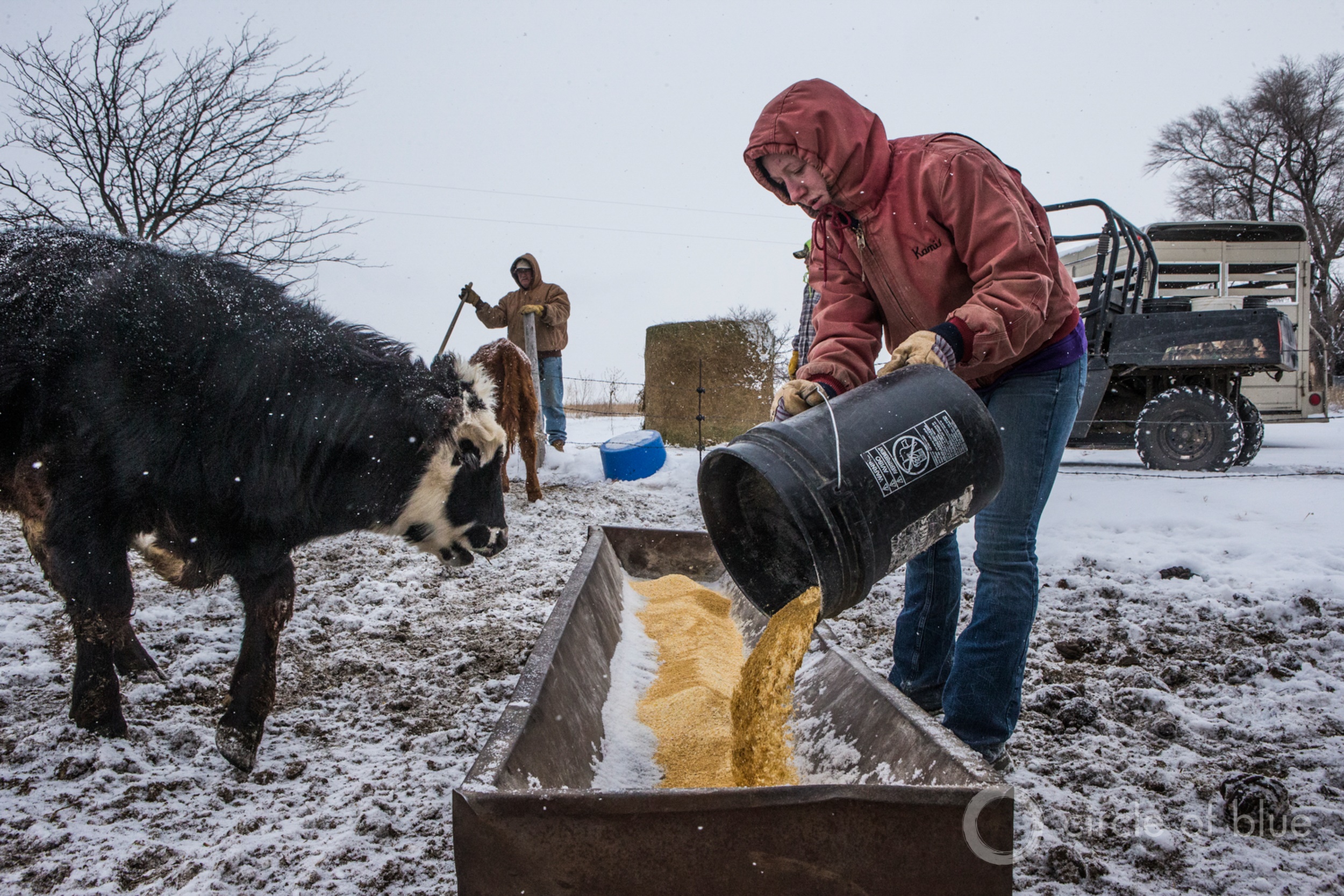
The Miller family doing daily chores near Rexford, Kansas. Photo © Brian Lehmann / Circle of Blue
McCarthy and others have noted that farm pollution problems flow downstream. Without collaboration, private well owners and cities such as Des Moines, Iowa, which is suing three agricultural drainage districts over nitrate contamination, are left with the cleanup bill.
“Certainly, I didn’t make the progress I wanted to make in building bridges with agriculture and in finding a way to articulate a really robust rural strategy,” McCarthy told the Post. “I know rural America is struggling right now, and I think when they see the word ‘regulation,’ they just look at that as being money that they’ll have to spend. I look at it as being investments that need to be made. So, there’s an opportunity the next administration could take in recognizing how you meet this environment and economy nexus in rural communities. It’s a challenge.”
Two agencies within the USDA are responsible for those investments in water. The Natural Resources Conservation Service works with farmers to reduce soil erosion, conserve water, increase land productivity, and minimize nutrient losses. The NRCS’s predecessor, the Soil Conservation Service, was formed in the wake of an earlier ecological disaster of farmland mismanagement, the 1930s Dust Bowl.
The Rural Utilities Service, on the other hand, provides low-interest loans and grants to repair drinking water and sewer systems. Since 2014, some $US 1.2 billion in loans and $US 350 million in grants have been authorized per year. Curley, who has followed the program for 30 years, said that the loan process is much simpler than the EPA’s revolving fund, an infrastructure loan program. The revolving fund’s complexity deters potential applicants from small communities, he said.
The service also assists with the intricacies of modern water treatment. Its circuit rider program dispatches professionals to guide rural utility operators, who might also be the postmaster and a handyman on the side, with technical questions. “They travel the states, getting to know people and building relationships,” Keegan said. “My constituency is grateful for that.”
New Farm Bill Offers Opportunity for Change
President-elect Donald Trump has not yet nominated an Agriculture Secretary, but both USDA agencies that deal with water acquire much of their authority through the farm bill, an enormous piece of legislation that Congress reviews about every four years. The current package expires in 2018, and negotiations on a replacement will begin this year.
Curley lamented some of the cuts that occurred in the 2014 farm bill. Congress, for example, trimmed the circuit rider program by 20 percent, to $US 20 million annually. “The circuit riders do a fabulous job and we need more of them,” Curly said. Given control of the checkbook, he would increase funding for technical assistance and infrastructure grants.
Other potential changes involve rules of the game, says Laura Ziemer, a water policy analyst at Trout Unlimited. Most importantly she says, is expanding the mandate of the Regional Conservation Partnership Program, a new feature in the 2014 bill that consolidated several existing projects. The program was designed to broaden the scope of land and water conservation, from field-level myopia to a broad look at watershed health.
NRCS needs changes in its contracting authority, Ziemer told Circle of Blue. As of now the program is “a misfit,” only able to work with individual farmers. To do watershed-scale restoration, however, officials need to be able to enter into contracts with irrigation districts, ditch companies, and other entities that control the infrastructure that is the backbone of the water delivery system.
The seeds of collaboration that McCarthy hoped for have been sown by the Obama administration in other areas. The president convened the National Drought Resilience Partnership, an interagency committee that worked with environmental groups, farm lobbies, technology companies, Indian tribes, and researchers to prepare communities for a water-scarce future.
That agency interaction has spillover effects. Grant and loan programs in competing departments are being brought into closer alignment. To maximize benefits, the NRCS and the Bureau of Reclamation earlier this year coordinated the distribution of water and energy conservation grants. The EPA and USDA, for their part, are working together on a cap-and-trade program for water pollution.
More EPA and USDA collaborations are needed, for nutrients especially, Keegan argues. The challenge will be doing it in a way that straddles the line between mandates and voluntary actions.
Partnership is an attraction of USDA programs. But so is the fact that recipients are tending house with other people’s money. With a Republican-led Congress keen to cut discretionary budgets and a president elected with rural support and an eye on infrastructure spending, the future of USDA water programs should be subject to intense debate.
Brett writes about agriculture, energy, infrastructure, and the politics and economics of water in the United States. He also writes the Federal Water Tap, Circle of Blue’s weekly digest of U.S. government water news. He is the winner of two Society of Environmental Journalists reporting awards, one of the top honors in American environmental journalism: first place for explanatory reporting for a series on septic system pollution in the United States(2016) and third place for beat reporting in a small market (2014). He received the Sierra Club’s Distinguished Service Award in 2018. Brett lives in Seattle, where he hikes the mountains and bakes pies. Contact Brett Walton

